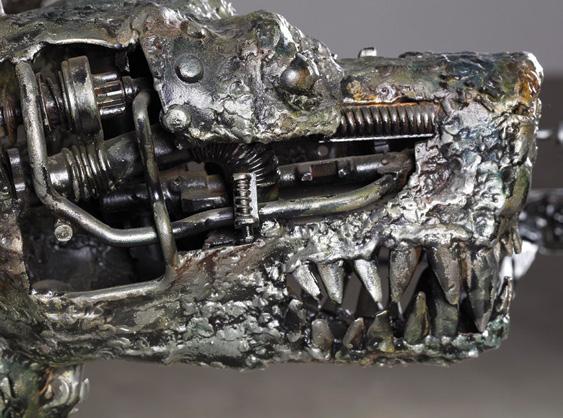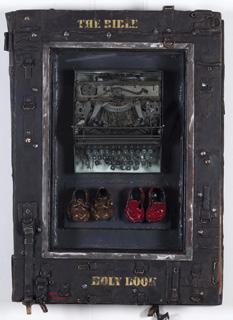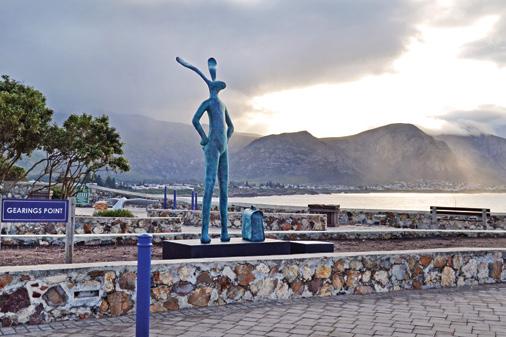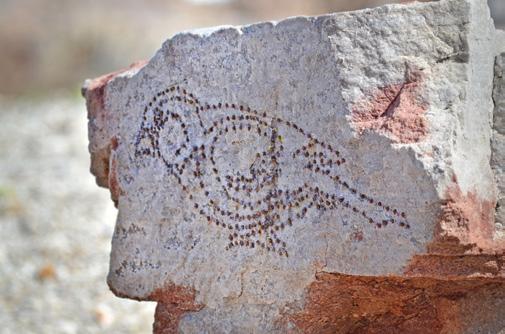
16 minute read
EARTHBOUND
www.eclecticacontemporary.co.za
Eclectica Contemporary presents a collection of Cape Town based ceramic artists in the third wave of the design exhibition titled 11:11. Highlighting sustainable design we draw reference to earth as an element and as a material property for creation. Earth is transformed by ceramic artists into key spiritual experiences through an ancient craft. Ceramics, like stone carving has been historically used as a method of documenting various life cycles including culture, politics and economics. Even though clay artifacts were widely used in South Africa for domestic and other purposes throughout the past two millennia, there is still remarkable absence of historical literature exploring prehistoric ceramics. In this exhibition the artists have replaced canvasses with clay to narrate their own histories, indigenous knowledge and personal experiences.
Advertisement
Talented duo Majolandile (Andile) Dyalvane and Zizipho Poswa are reinterpreting African traditions through ceramics at their acclaimed studio Imiso. The term ‘Imiso’ is a Xhosa word that translates to ‘tomorrow’ and hints at the movement of African designs into unapologetically modern future. Imiso ceramics take inspiration from personal histories as well as indigenous methodologies and African traditions, making their practice conceptually rich. The scarified collection is inspired by the ancient African Tradition of body scarification. A traditional practice that is used to protect individuals against negative spiritual and physical manifestations in the African realm of traditional knowledge.
Madoda Fani grew up in Gugulethu, Cape Town and pursued his creative practice as a fine art Student at Sivuyile College. He worked as a ceramic painter in various pottery studios, where he started to develop his own style. He is known for his detailed finishing on minimalist wood-fired terra cotta shapes. His hand carved details echo the natural world and in the same breath speaks of the human imprint on the environment. Similarly, his hand-coiling technique that he has become known for is indicative of his hand as a tool for manipulating natural elements and mark making. His 2000 award at Le Salon International de l’artisanal de Ouagadougou in Burkina Faso was a crucial step in affirming his creative process and his work boasts of an extensive list of awards and exhibitions both locally and internationally.
Sinethemba Xola was born and raised in a vibrant township of Motherwell in the Eastern Cape. He has pervasive training in the medium of clay and holds a B-Tech degree in ceramic design from Port Elizabeth Technikon. In addition, he also worked at two educational institutions namely College of Cape Town and Johannesburg TVET college as an educator in craft and ceramics. Currently Xola resides in Cape Town as a technician and facilitator of clay workshops at iMiso Studio and also practices as an independent ceramic artist. The organic curves of Xola’s clay sculptures intentionally announce the female body but can also be viewed as masculine due to its overarching ambiguous shape. The artist plays inside an in-between space that reflects his undeniable craftsmanship and talent.
Melissa Barker is an established ceramics artist, qualified French chef and archaeologist, based in Cape Town, South Africa. Her archaeological studies focus on ancient Babylonian pottery and food recipes written in 1700 BC. Melissa’s extensive knowledge of Mesopotamian

material culture, and the experience of working with ancient ceramics, has greatly influenced her vessels and pay homage to the sophistication of this ancient civilization. Her most recent collection, I See You is informed by the prehistoric relationship between humans and bees. The primordial act of gathering honey dates back to 10 000 BC where honey was first offered to the Gods. The metaphorical beehives are punctured by a hole that represents a sacred umbilical cord and is indicative of female form. The void can also be interpreted as a womb or an empty space before creation can take place. “Like the hives houses the Queen bee, so too does the female body house the creator spirit.” Ceramic creations inherently carry a dual essence as functional objects and works of art. The merging of conceptual ideas and practical utility make these artifacts durable and functional, yet fragile. They carry inside them sacred meanings and delicate histories all earthbound through their materiality. The ceramic artists represented in this exhibition all connect through their individual experiences with clay and simultaneously contribute to the conversation of pioneering African design for a more sustainable future. - Marli Odendaal

WILLIE BESTER
Interrogating the gap between us
By Ruzy Rusike
www.themelrosegallery.com
For Willie Bester, the personal is political, and being apolitical in South Africa is a dangerous luxury that should be avoided. Utilising a cross-section of artist mediums such as mixed media, sculpture, painting and installation art, his art forms much of his protest. His anti-Apartheid activism is evident in his work, as is his more contemporary focus on decolonising the South African collective mind. Therefore for him mixed-media acts as the line between reality and imagination, in the sense of bringing an idea or a narrative that was repressed back to life. Abruptly this interchange between the two ‘worlds’ becomes the relationship that is very much dependent on each other. Resulting in the gap between the unconscious and conscious mind becoming blurred. Making Willie Bester no stranger to political, psychological and personal commentary – it has been an intrinsically personal aspect of his very existence, dating back to his childhood where he was classified as ‘other coloured’ by the Apartheid state.
For something to be frightening, it need not to be frightening in and of it self, it needs to be frightening in the sense that one is able to familiarize with it as a case of concealment. By the unconcealment of the self. For Bester the ‘self’ determines the location of the works and those perceptions therefore become the unconcealment of self. Translating “himself into that state of feeling (uncanny), and to awaken in himself the possibility of it” (Sigmund, F. 1919:369). The possibility of going beyond who he is, that is why the uncanny is both an aesthetic and psychoanalysis of the self. So when we look at Bester and his illustrious career where he has made the personal political by taking the gap between the unconscious and conscious mind. Bester’s use of a crosssection of artist mediums such as mixed media, sculpture, painting and installation art to convey his protest and resistance, with much of his recent work considering the dangers of colonisation’s permanent legacy.

(Detail) Dog of War, 2020, Mixed media, 235 x 178cm
Our humanity is shared, and thus to consider oneself apolitical is inherently perilous to society. Bester stimulates that which inspires by giving us an awareness of our own dignity and limitations as that which is humanity shared. Holy Bible, 2020 is like most of Bester’s works that integrates our human fragility. He incorporates the two childhood shoes and juxtaposes it with the broken typewriter. By doing this he uses the fragility of nostalgia and uses it as a signifier of the fragility of the mind of a child and how we are able to absorb that which is already broken without questioning it. The glass that seals this is a glass that is fastened by that which he defines as the Holy Bible, 2020. By using nostalgia as a tool when dealing with an object and its historical significance he opens us up to the possibility to see ourselves but to simultaneously better ourselves as we find ourself or our idea I without limitations. Simultaneously the shoes of missing children, the Swastika, symbols and representations of Apartheid South Africa and scenes of informal settlements that speak to poverty present themselves in Bester’s artworks to bear witness to the ills in our society. His artworks are hard hitting and demand the full attention of the viewer. These range from larger than life sized steel sculptures that weigh several tons to realistic oil and acrylic paintings framed in hand beaten and painted iron.
Although Bester is renowned as one of South Africa’s most crucial resistance artists, with his work exhibited and studied worldwide, his view on contemporary issues still is unwaverly significant of a man who uses everyday objects degraded and regarded to integrate the human experience. His art is featured in collections around South Africa as well as abroad in notorious collections such as the De Beers Collection, the Contemporary African Art Collection in Geneva and the David Bowie Collection, Pretoria Art Museum, University of Cape Town, University of the Witwatersrand, UNISA, Department of National Education, Smithsonian Institute, Jean Pigozzi – Contemporary African Art Collection, David Bowie Collection and many others. Bester’s art speaks to our history, our present and begs the question of our future.

Barometer for Poverty, 2020, Mixed Media, 167 x 120cm Holy Bible, 2020, Mixed media, 87 x 62 x 10cm



VERTICAL ANIMAL
www.hermanusfynarts.co.za
2020 marked the 8th anniversary of the Sculpture on the Cliffs exhibition. Gavin Younge, renowned sculptor and Emeritus Professor of Fine Art at Cape Town University, acted as curator and chose 12 outstanding artists following a site meeting and briefing in November 2019. The exhibition was meant to open in June 2020 and form a highlight to the annual 10day Hermanus FynArts Festival.
A global pandemic changed that, but the artists pushed back—and adopted the necessary Covid protocols to find new meditative ways of engagement.
Let us start our walk with a consideration of Collen Maswanganyi’s United We Stand. At first sight, he has gathered some sticks and painted them. On further inspection, we realise that he is addressing cattle farmers’ need to protect their cattle herds at night.
In her work entitled The View Jean Theron Louw uses line to delineate volume. This drawing in space conjures up the unintended and unresolved conflict between the animal world and the human world. Her project for Vertical Animal draws on what she calls the ‘overlap’ zone: Together, animals and humans have a long history of overlapping, or shared space. Our ever-increasing urban sprawl creates conflict as we invade and encroach on the baboon’s natural habitat. Residents of the southern coast are aggrieved that they have become a food pantry for baboons.
Right Mukore’s sculpture Watchdog has a self-authoring authenticity. It speaks to neither right nor wrong in its ADTlike purpose, and claims Gonzalez-like improvisation (the re-purposed car parts) in its striding gesture. Right has an ability to see into the branches and tree trunks and to imagine the forms hidden within.

Site-specific Land and Nature Art Collective. Above: Karin Lijnes. Opposite Page: Nanette Ranger

Guy du Toit


Above: Jean Theron Louw. Opposite Page: Jake Michael Singer
Wilma Cruise’s Zara and Phoebe features a pair of gamboling pups. Often her works are guided by what John Maxwell Coetzee, via his novel, Elizabeth Costello, regards as the embodiment of feeling and mental reasoning. Not, “I think, therefore I am” but the existential inversion – that existence precedes essence.
So, if Cruise can picture two dogs on a promenade, Guy du Toit can picture a rabbit-about-town waiting for his Uber pickup. Hare with Baggage is playful, charming and free of menace. He is, after all, a bunny His suitcase contains no secrets and he carries no time piece. The animal world is never in a hurry.
Kevin Brand’s Bremen Arpeggio is based on a story entitled Town Musicians of Bremen by the Brothers Grimm. The Bremen story normally depicts the animals’ (‘musicians’) triumph over the bad-guys by means of standing on top of each other, and producing a combined cacophony of sound (chord). Kevin’s interpretation was to place the animals in a processionlike format, leading to the title, Bremen ‘Arpeggio’.
Karin Lijnes’s large, rotating totem pole, Freedom Tree was inspired by an earlier work that played with the notion of language—more explicitly Twitter. Here, she grapples with the interface between land and sky. She writes, “Freedom Tree, inspired by Alexander Calder’s mobiles, explores the movement of birds. As the mobile rotates and as the birds circumnavigate their environment their freedom is both celebrated and curtailed. Each of these bird forms are inscribed on the rear with a red cross, signifying the ICUN index of endangered birdlife.
Jake Michael Singer’s work seems birdlike as well – however his Marine Murmur could also be an eddy in the wind—an eddy that has been made visible. Wind, and air movement in general, is not visible—we see only its effect. In the movement of leaves, or scraps of paper blown down the road.


Anni Snyman
Anni Snyman and PC Janse van Rensburg’s engravings also make reference to prior art forms, art in circulation. Kombuis is conceived of as a kitchen table, initially it carried a rock engraving of a dassie, one of the smaller animals inhabiting the rocky shoreline of South Africa’s coastline, now it has been extended to include other species inhabiting the littoral zone and the coastline.
Whereas a folk tale may have a salutary purpose in mind, warning young children against accepting sweets from strangers, for instance—legends have a more tenuous grip on reality. Their exact meanings are not clear. Take the legend of Artemis and Actaeon, written by Ovid, a poet, 2043 years ago. In Ovid’s story, written all those years ago, Actaeon spied on the naked Artemis whilst she was bathing. Artemis, in revenge, turned him into a stag (or kudu)! Nanette Ranger is drawn to history and the nature / culture divide and she draws on this myth for her work The Hunt, in reference to the fact that poor old Actaeon was eaten by his own hunting dogs. David Griessel Traveling Hermit has taken on a new surprise meaning with the occupation by an arts collective of an upmarket AIrbnb in Camps Bay. In his notes, David states that humanity and crustaceans have something in common, both are ensconced in a shell. A metaphorical one, in our case (but limited by an environmental lack of certainty) and a literal one in the case of the ten-legged crab.
Sculpture has long been concerned with materials and processes. We hear of the death of easel painting almost every second day – David has expanded the range of available processes by ‘printing’ this very large form on a 3D printer.
Jaco Sieberhagen also uses new technology – light amplification by stimulated emission of radiation—Laser. Well, the technology is not so new—the first prototype dates from1960. Jaco is more interested in the forms and narratives that he can create on flat panels. For Taking Flight, he used two planes to create a tableau of a boy taking wing, Icarus-like, and soaring off across the bay. - Gavin Younge
OPEN CALL TO ARTISTS
FROM THE ENDANGERED WILDLIFE TRUST
The Endangered Wildlife Trust is invi�ng ar�sts with a love for wildlife and a passion for South Africa’s natural wonders to submit their works for possible inclusion in a group exhibi�on en�tled The EWT Contemporary21 at the Gordon Ins�tute of Business Science (GIBS) in Illovo, Johannesburg, from Saturday 4 September–Sunday 12 September 2021.
EXHIBITION THEME
The vision behind everything that the EWT does is a healthy planet and an equitable world that values and sustains the diversity of all life. We are dedicated to conserving threatened species and ecosystems in southern and East Africa to the benefit of all people. We invite you to interpret through your art one or all of these three pillars of our strategy: 1. Saving Species 2. Saving Habitats 3. Benefi�ng People
For more information: ewt.org.za/get-involved/ar�sts Tammy Baker EWT Business Development Officer ewtartexhibi�on@ewt.org.za
DREAM WINDOW
A solo exhibition by Jeanne Hoffman Presented by Salon Ninety One
www. salon91.co.za
Dream window borrows its title from a 1992 documentary on Japanese gardens, referencing the conceptual and aesthetic devices of the ancient horticultural artform – that juxtapose outside with inside, order with wildness, the stasis of framing (the captured moment) with perpetual movement, growth, and change. These purposes run parallel to those of Hoffman’s practice, where her paintings are intended as places, spaces, or stages upon which various gestures and encounters take shape.
Jeanne Hoffman sees paintings as places where words engage with what cannot be verbalised. Conversations of another sort – even conflicts – arise as realities invade one another’s territory. But the result is a fertile space, creative through the multiple encounters. From one territory, moves the unmitigated, primordial, ineffable; from another, the mediated, rationalised, observed – drawn towards each other in this space of painting, processed by the artist through poetic responses to these fragmented recollections.
These conversations compound in the act of exhibiting: Individual pieces interact with each other; the artist and the viewer engage one another through the work. The paintings are, thus, intended as devices for contemplation – what Roland Barthes describes as a “stage” upon which thoughts roam freely and both artist and viewer are confronted and transformed by the gestures playing out.
Hoffman elaborates:
“The architecture of the space (the stage, or the painting) frames a symbolic constellation that is a space of continuous transformation: It is where the contemplator, both the viewer and the artist, moves between movement and stasis, between separation and union, between what is real and what is possible, between the visible and the sayable. This is a movement towards an improbable synthesis of waking life and the imagination. In this perspective, painting is the site, a place and an imaginary space, where paradoxes can, and do, co-exist. The artwork does not testify to difference, but opens it into a region, a productive space, and a site for moments of insight.”
Dream window will open on Wednesday the 31st of March and run until Saturday the 01st of May 2021. This is the artist’s second solo exhibition with Salon Ninety One. Please note the gallery is currently trading by appointment only. On the day of the opening, and for the duration of the exhibition we will be hosting small group viewings. The artist will also be hosting a walkabout on the evening of the 31st of March. Booking is essential. Venue: 91 Kloof Street, Gardens, Cape Town. If you wish to receive the catalogue or to make a booking to view the show, kindly contact +27 21 424 6930 or enquiries@salon91.co.za
Fragment Garden, 2021, Acrylic on Italian cotton, 800 x 600mm


Self-portrait as a vase, 2021, Acrylic on Italian cotton, 1200 x 1000mm

Stage, 2021, Acrylic on Italian cotton, 600 x 500mm



